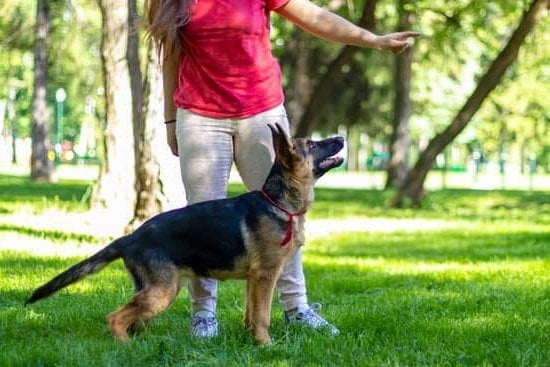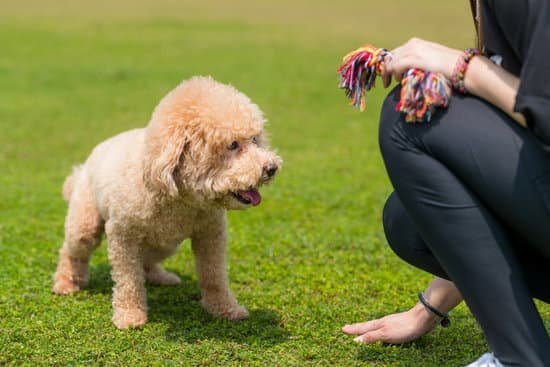Crate training a young dog is an essential part of their early development and can provide numerous benefits for both the dog and the owner. In this article, we will explore the step-by-step process of crate training a young dog, from choosing the right crate to transitioning to independent time.
The benefits of crate training for young dogs are numerous, and it is essential to understand why this process is valuable. Crate training can provide your young dog with a safe and secure space that mimics a den-like environment, which can help reduce anxiety and stress. Additionally, crate training can aid in housebreaking your dog and preventing destructive behaviors while you are away.
Choosing the right crate for your young dog is crucial in ensuring their comfort and safety during the training process. From wire crates to plastic kennels, there are various options to consider based on your dog’s size, breed, and behavior.
Introducing your young dog to the crate and establishing a positive association with it are critical steps in successful crate training. With patience and consistency, you can create a positive experience that will make crate time enjoyable for your young dog.
Handling common issues and challenges during crate training will also be discussed, along with setting a crate training schedule that aligns with your puppy’s needs. Gradually increasing the time spent in the crate and transitioning from crate training to independent time are key components of successfully integrating this practice into your daily routine with your young dog.
Choosing the Right Crate for Your Young Dog
When it comes to crate training a young dog, choosing the right crate is essential for the success of the training process. There are several factors to consider when selecting a crate for your young dog, including size, material, and type. The crate should be just big enough for your dog to stand up, turn around, and lie down comfortably. It should also be made of sturdy and durable material to ensure your dog’s safety.
One popular option for crates is wire crates, which are well-ventilated and allow dogs to see their surroundings. Another choice is plastic crates, which provide a more den-like environment that some dogs find comforting. Soft-sided crates are also available and can be a good option for travel or short-term use.
It’s important to consider your dog’s behavior and needs when choosing the right crate. Some dogs may do better with a covered crate that provides a sense of security and privacy, while others may prefer an open design that allows them to see what’s going on around them. Ultimately, the goal is to create a safe and comfortable space where your young dog can feel secure during the crate training process.
| Crates Types | Features |
|---|---|
| Wire Crates | Well-ventilated and allow dogs to see their surroundings |
| Plastic Crates | Provide a more den-like environment that some dogs find comforting |
| Soft-sided Crates | Good option for travel or short-term use |
Introducing Your Young Dog to the Crate
- Make the crate inviting: Start by making the crate a comfortable and inviting space for your young dog. Place a soft blanket or cushion inside and add some of your pup’s favorite toys.
- Encourage exploration: Allow your young dog to explore the crate at their own pace. Keep the door open and let them wander in and out freely, without any pressure or forcing.
- Use treats and praise: To create a positive association with the crate, use treats and praise when your young dog shows interest in or enters the crate voluntarily. This will help them understand that good things happen when they are in the crate.
- Gradual introduction: Once your young dog is comfortable with being near or inside the crate, start gradually closing the door for short periods of time while still in their sight, then open it immediately after. Slowly increase the duration of time with each repetition.
By following these steps, you can help your young dog feel comfortable and secure in their new home within a home, setting them up for success as you move forward with their crate training journey.
Establishing a Positive Association With the Crate
One of the key components of successful crate training for a young dog is establishing a positive association with the crate. This involves creating an environment where your dog sees the crate as a safe and comfortable space, rather than a place of punishment or confinement. To achieve this, it’s important to introduce your dog to the crate in a gentle and gradual manner.
Start by placing the crate in an area where your young dog spends a lot of time, such as the living room or kitchen. Leave the door of the crate open and encourage your dog to explore it at their own pace. You can also place treats or toys inside the crate to entice your dog to go in and investigate. It’s essential not to force your dog into the crate, as this can create negative associations with it.
Another way to establish a positive association with the crate is by making it a cozy and inviting space for your young dog. You can line the bottom of the crate with comfortable bedding or blankets, and even consider placing an item of clothing with your scent on it inside the crate. This can help reassure your dog when they are inside the crate, as they will be comforted by your familiar smell.
Consistency is also crucial in establishing a positive association with the crate. Make sure that any interaction with the crate is always followed by praise and rewards, so that your young dog learns to associate being inside the crate with positive experiences. With patience and positive reinforcement, you can help your young dog view their crate as a secure and enjoyable sanctuary.
Setting a Crate Training Schedule for Your Young Dog
Establishing Meal Times
One way to start setting a crate training schedule for your young dog is by establishing regular meal times. Feeding your dog at the same times each day will help regulate their bathroom breaks, making it easier for you to predict when they need to be let out of the crate for potty breaks.
This also helps create a routine around mealtimes, which can make it easier for your dog to adjust to being in the crate before or after eating.
Introducing Play and Exercise Periods
In addition to meal times, scheduling play and exercise periods for your young dog is important. Making sure they get enough physical activity and mental stimulation throughout the day will help them burn off excess energy, making it easier for them to settle down in the crate when needed. By incorporating play and exercise into their daily routine, you can also help establish a pattern that includes time in the crate as part of their overall day.
Including Nap and Rest Times
Just like humans, dogs need regular rest and nap times throughout the day. By scheduling specific periods for napping or resting, you can ensure that your young dog has designated times for relaxing in their crate. This can help them become accustomed to spending time in the crate without feeling stressed or anxious about being confined. It also gives them opportunities to learn how to self-soothe and entertain themselves quietly while inside the crate.
Handling Common Issues and Challenges During Crate Training
Crate training a young dog can sometimes come with its own set of challenges and issues that may arise. It’s important to understand these common problems and know how to address them effectively, ensuring a smooth crate training process for your furry friend.
Whining and Barking
One common issue during crate training is whining and barking. This behavior may indicate your young dog’s discomfort or anxiety about being confined in the crate. To address this, it’s important to not give in to their demands by letting them out when they are making noise.
Instead, wait for a moment of silence before opening the crate door. Additionally, try providing some comforting items in the crate such as a blanket or a favorite toy to help create a positive association with being inside.
Accidents in the Crate
Accidents inside the crate can be frustrating for pet parents, but it’s important to remember that young dogs are still learning bladder control. If accidents happen, avoid punishing your dog as this can create negative associations with the crate. Instead, clean up the mess thoroughly without allowing your pup to witness it, and consider adjusting the crate schedule to give more frequent potty breaks outside.
Anxiety and Fear
Some young dogs may exhibit signs of anxiety or fear when introduced to the crate. This could be due to previous negative experiences with confinement or other underlying factors. It’s crucial to approach crate training with patience and understanding, gradually introducing your dog to the crate in a positive manner. Use treats and encouragement to help your pup feel more at ease inside the crate.
By recognizing these common issues and addressing them appropriately, you can work through any challenges that may arise during crate training and ensure a positive experience for both you and your young dog.
Gradually Increasing the Time Your Young Dog Spends in the Crate
When it comes to crate training a young dog, it’s important to gradually increase the time your furry friend spends in the crate. This process requires patience and consistency in order to ensure that your dog feels comfortable and secure in their crate. Here’s how you can effectively increase the time your young dog spends in their crate:
1. Start slow: Begin by leaving your dog in the crate for short periods of time, such as 10-15 minutes. Use this time to gauge their reaction and comfort level. If your dog remains calm and relaxed, you can gradually increase the time they spend in the crate.
2. Use positive reinforcement: As you increase the time your dog spends in the crate, continue to use positive reinforcement techniques such as giving them treats or toys when they enter their crate. This will help create a positive association with being in the crate for longer periods of time.
3. Monitor behavior: Keep an eye on your dog’s behavior while they are in the crate for extended periods of time. Look out for signs of distress or anxiety, and be prepared to adjust accordingly if needed.
Remember, every dog is unique and may require different methods of crate training. It’s important to be patient and understanding throughout this process, and always provide plenty of love and reassurance for your young pup as they adjust to spending more time in their crate.
Transitioning From Crate Training to Independent Time for Your Young Dog
In conclusion, crate training a young dog can be a beneficial and effective way to provide them with a safe and comfortable space while also teaching them valuable skills for independence. Understanding the benefits of crate training, such as providing security, aiding in housebreaking, and preventing destructive behaviors, is essential in successfully implementing this training method.
Selecting the right crate for your young dog is crucial to ensure their comfort and safety, whether it be a wire, plastic, or collapsible crate.
Introducing your young dog to the crate and establishing a positive association with it are key steps in the process. By using treats, toys, and positive reinforcement, you can help your dog view the crate as a welcoming environment rather than a place of confinement. Setting a consistent crate training schedule will also aid in promoting good behavior and reducing anxiety for your young dog.
Although there may be common challenges during the crate training process, such as whining or resistance from your dog, these can be addressed with patience and consistency. Gradually increasing the time your young dog spends in the crate and transitioning to independent time will ultimately lead to them feeling secure on their own.
Following these steps on how to crate train a young dog will help foster a positive relationship between you and your pet while setting them up for success in their early stages of development.

Welcome to the blog! I am a professional dog trainer and have been working with dogs for many years. In this blog, I will be discussing various topics related to dog training, including tips, tricks, and advice. I hope you find this information helpful and informative. Thanks for reading!





